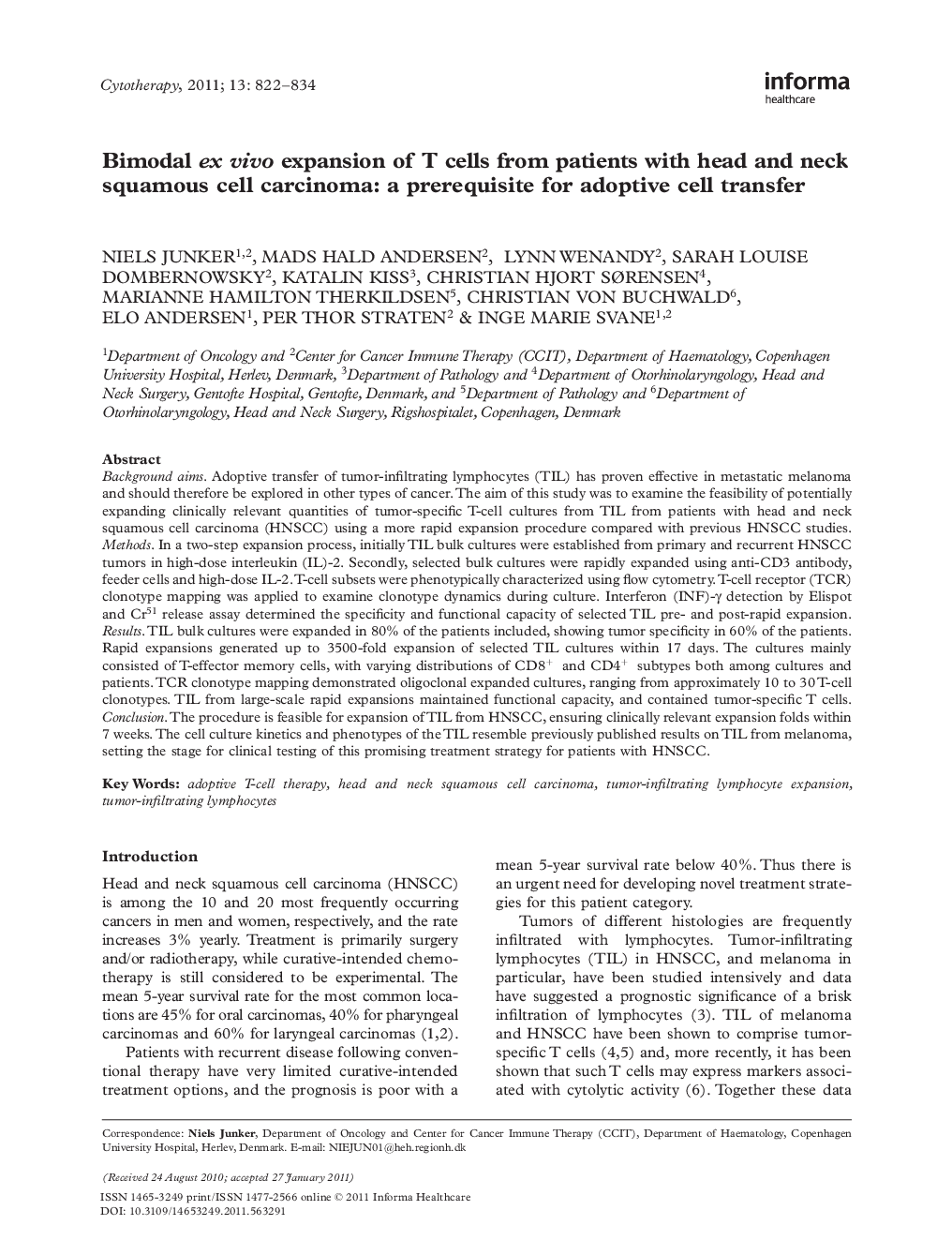| Article ID | Journal | Published Year | Pages | File Type |
|---|---|---|---|---|
| 2172127 | Cytotherapy | 2011 | 13 Pages |
Background aimsAdoptive transfer of tumor-infiltrating lymphocytes (TIL) has proven effective in metastatic melanoma and should therefore be explored in other types of cancer. The aim of this study was to examine the feasibility of potentially expanding clinically relevant quantities of tumor-specific T-cell cultures from TIL from patients with head and neck squamous cell carcinoma (HNSCC) using a more rapid expansion procedure compared with previous HNSCC studies.MethodsIn a two-step expansion process, initially TIL bulk cultures were established from primary and recurrent HNSCC tumors in high-dose interleukin (IL)-2. Secondly, selected bulk cultures were rapidly expanded using anti-CD3 antibody, feeder cells and high-dose IL-2. T-cell subsets were phenotypically characterized using flow cytometry. T-cell receptor (TCR) clonotype mapping was applied to examine clonotype dynamics during culture. Interferon (INF)-γ detection by Elispot and Cr51 release assay determined the specificity and functional capacity of selected TIL pre- and post-rapid expansion.ResultsTIL bulk cultures were expanded in 80% of the patients included, showing tumor specificity in 60% of the patients. Rapid expansions generated up to 3500-fold expansion of selected TIL cultures within 17 days. The cultures mainly consisted of T-effector memory cells, with varying distributions of CD8+ and CD4+ subtypes both among cultures and patients. TCR clonotype mapping demonstrated oligoclonal expanded cultures, ranging from approximately 10 to 30 T-cell clonotypes. TIL from large-scale rapid expansions maintained functional capacity, and contained tumor-specific T cells.ConclusionThe procedure is feasible for expansion of TIL from HNSCC, ensuring clinically relevant expansion folds within 7 weeks. The cell culture kinetics and phenotypes of the TIL resemble previously published results on TIL from melanoma, setting the stage for clinical testing of this promising treatment strategy for patients with HNSCC.
